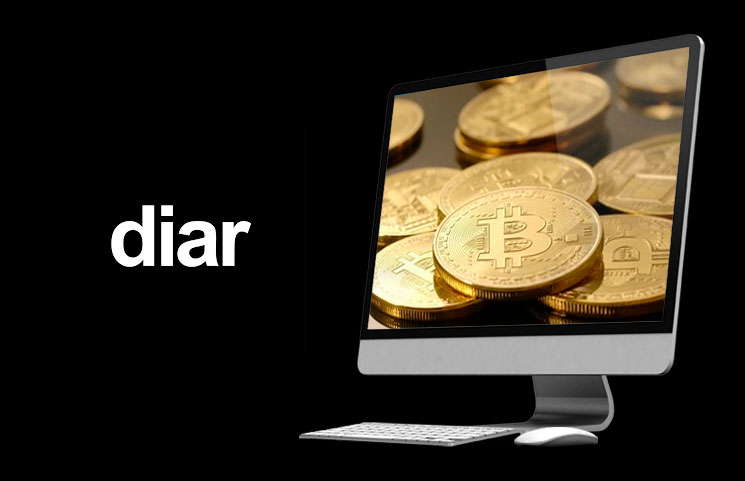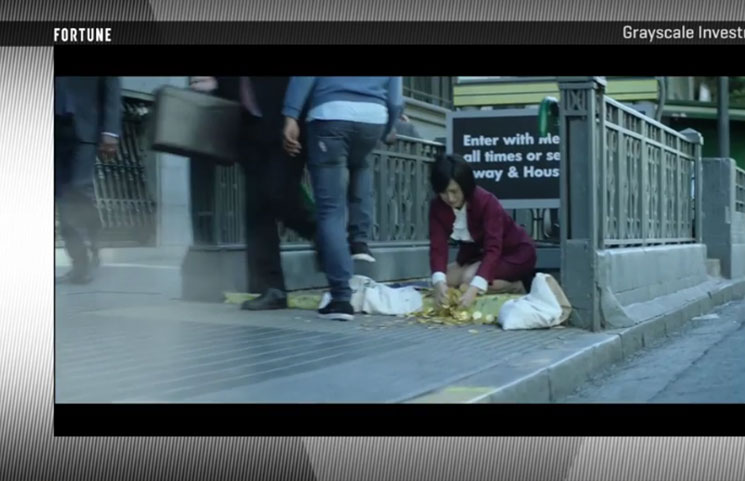Cryptocurrency Information
Blockchain & Initial Coin Offerings Future: 2018 & Beyond ICOs & DLT?

The blockchain could be the most disruptive technology released over the last 100 years. This could be an ambitious statement, as we have only 18 years in, but it may be true. The advent of distributed ledgers will bring new levels of efficiency and security to many business sectors, but so far none has made more of an impact than on the financial industry. Going deeper, aside from cryptocurrencies, smart contracts, and money transfers, its real power comes from its ability to tokenise financial assets, which allows them to be traded like shares during early-stage investment rounds.
This method of fundraising is called an initial coin offering (ICO), and is the equivalent to an initial public offering. Companies may choose to launch an ICO for a multitude of reasons, but it always involves raising money. And when compared to IPOs, an ICO is cheaper, quicker to market, and does not involve cutting through the red tape of regulated markets.
Interestingly, most ICOs today are used as a misnomer. Technically, an ICO should be used for the launch of new cryptocurrencies such as Litecoin or Dash, yet most of the launches you read about today involve shares in a business, not a virtual currency. This misunderstanding is a result of media frenzy and entrepreneurs positioning themselves with the hype of Bitcoin and its Ethereum derivative.
So keep in mind that when you buy tokens in an ICO, you are not really buying a cryptocurrency; those tokens are just an arbitrary means of transferring some of the company’s equity to you, which means they are the same as buying shares.
What ICOs Offer The Investment World
Now that we have clarified the meaning of what initial coin offerings are, let’s return to the possibilities that the blockchain and initial coin offerings offer startups and the finance world. For new businesses, initial coin offerings allow them to tap into a worldwide audience. Through the issuance of an ERC20 token, which is the standard for Ethereum tokens, allows a startup to list itself on a number of exchanges that facilitate the trade of tokens. Anyone can launch an initial coin offering today, with business equity spread out to every part of the world. This makes the logistics of organising and distributing the value of a company much easier when compared to an IPO. Companies do not need to report their performance for each market, nor do they need to pass new resolutions or issue shares. This all add ups to costly headaches for bootstrapped businesses.
Even just looking at a single market, the barriers to entry of being in a regulated environment puts many companies off the idea of going public. While on the other hand, issuing a virtual token is both time and cost efficient, and has the bonus of exposure to the cryptocurrency market. This means that the idea of ICOs for many founders are simply too good of an idea to miss out on. ICOs give some promising benefits to investors too.
The key issues that investors face when putting money into a startup are that new companies are likely to fail, and the fact that people often cannot withdraw their investments. It is not uncommon for angel investors to be put into contracts that last for 5 to 10 years, sometimes even longer. These contracts usually have clauses that prohibit investors from selling their shares. While going to a private buyer is always an option, most will need to wait until there is an IPO or a trade sale takes place to cash out.
Secondary markets for IPOs have been tested in the past, and have amounted to nothing more than simple bulletin boards for people who are looking to buy and sell. Selling shares or business equity is a slow, manual process, which is another reason why people love tokens, as their resale value is built to ERC20.
Why The Future Of ICOs Remains Uncertain
In terms of technology and ease of use, ICOs could easily be the way forward. However, the future adoption and use of ICOs for fundraising will be contingent upon the regulation and tolerance of governments worldwide. Countries such as China and South Korea have already banned ICOs from being launched within their borders, and the SEC in the United States has classified tokens as securities, which puts them in the same category as stocks, bonds, or any other financial instrument under its jurisdiction. The heightened scrutiny of ICOs is due to the lack of a due diligence process; there is no way to know if an ICO is legitimate or not, or even if their team and business exists at all. Anyone can launch an ICO and have a whitepaper, website, and code put up within days, meaning there is little protection for the general public against fraud.
The ICO phenomenon is experiencing the same kind of backlash as crowdsourcing when it was first introduced. People eagerly bought into companies that offered the world but provided very little. Compared with today, investors are now being sucked into the glamor of ICOs and not considering what the company can do or what it is capable of.
The Way Forward: Obstacles & Opportunities
The regulatory landscape for initial coin offerings needs to change, and it will. We will witness the same changes that the equity-based crowd funding experienced. This shift is both desirable and necessary for the fundraising model to stay alive. Without it, ICOs, and its underlying blockchain technology will both be mired with a bad reputation that could hurt its long-term adoption by conventional businesses.
What will happen is that the lessons learned from crowdsourcing will be applied to ICOs. These lessons include adopting a structured due diligence process, as well as background screening of the company’s founders before an ICO launch.
With these regulatory plays in motion, the future of the Ethereum blockchain looks optimistic, as blockchain offer far more than just the ability to write decentralized smart contracts.
Beyond Ethereum’s Solidity Programming Language
One of the biggest complaints that are talked about in the Ethereum community is the requirement to use its Solidity programming language. At first glance, Solidity looks the same as JavaScript, although it is an entirely different language that forces you to look at problems within a new paradigm.
Due to the inexperience of developers in building Solidity-backed applications, some blockchains decided instead to go with a functional programming language. For example, the NEO blockchain states that it will offer support for .Net and Java to start with and will expand to Python and Go for applications on its platform. With these 4 languages in mind, NEO will be able to accommodate 90% of the developer community.
Qtum is an alternative blockchain that allows programmers to write smart contracts that are similar to Ethereum, except using Bitcoin’s UTXO format. The differences between these two languages differ in their how they track their users balances. With Bitcoin, there is no notion of account or balance. Instead of tracking each person’s amount in Bitcoins, the unspent coins are tracked instead. This then makes it easier to keep track of those records when compared with Ethereum, which tracks both the unspent and spent balances.
Also, by looking at how the various blockchains are adopting themselves to the market, one can see a clear divide between those that have positioned themselves for consumers, while others are for enterprise use.
Ethereum’s Pseudonymous Identity Model
With Ethereum, each smart contract that you deploy is given its own public address, or identity. This means that Ethereum could said to be pseudonymous. While others like NEO allow for a native identity to be used by apps deployed on its blockchain. The potential for native (persistent) identities on the open internet would mean you’d never have to create separate accounts for your email, social media, or other services.
Due to these disruptive changes made by the platforms Ethereum and NEO, some have compared the blockchain to the Internets early origins. The difference being that the blockchain could provide a native identity that can be used by any application on the network.
Already, there are several projects that are working to implement native identity with Ethereum. One example is Civic, which allows people to record their details that can then be used for any purpose or app on the blockchain.
On a network level, having a persistent identity will solve a potential issue with Ethereum. As if there no native identity built in, programmers that are developing platforms will fragment the ecosystem.
Consensus Protocol
At present, the blockchains are criticized for the amount of energy they require to power their networks. The costs are high due to the consensus methodology that Bitcoin and Ethereum uses, which is called proof of work. With proof of work, each node attempts to notify the updated status of the network by through solving a cryptographic puzzle. Once this puzzle has been solved, each node agrees to this and proceeds ahead.
In addition to the high power consumption for using this method, the other downsides are its high costs and slow speeds. There are a few answers for this problem, with each having their individual strengths and weaknesses. Ethereum is beginning to move towards a proof of stake method, as are Qtum and Tezos. It could be argued that Tezos is a step ahead of the others through its decentralized governance. This means that any major upgrade or change to the network will be first proposed and then voted upon, thus making the headaches of a hard work an unlikely occurrence.
NEO is going with what they call a delegated Byzantine Fault Tolerance (dBFT) mechanism that allows the network to sync faster without having to consume a copious amount of energy in the process. dBFT will support a maximum of 10,000 transactions each second, which is an astronomic improvement to Ethereum’s 15.
Blockchain Is The Future — But How Will It Look?
Looking back through the history of the internet, we know that Google was not the first search engine, nor was Facebook the original social networking site. These platforms grew out of the demand for the best product. We could see something similar happen to do with the blockchain. Bitcoin and Ethereum might always be the coins and dapps that all others will be measured against, yet they are not without their imperfections.
While the blockchain technology will be the future for governments, large businesses and startups, the future that we see today will not be its final product. We live in a time now of experimentation.
The irony of the ICO craze that has cast doubt of the crypto ecosystem is that its glamor and popularization has led to a trove of new protocols, networks, and other technical building blocks that will benefit everyone in the near future. If the Blockchain manages to get replaced by something else, its successors will continue to rely on it as something rudimentary as the metric system. Despite the current technological and economic limitations, the blockchain technology will continue to develop and allow for different computational models (blockchain oracles).
And just as we have seen with its far-ranging technological implications, the financial sector has also been transformed by tokens. This is just the start for their use, with ICOs being the most obvious go-to option for startups to raise funds. Tokens could one day rearrange the organizational structure of business as we know them, and create new, democratic entities (DAOs).
Whatever the future is exactly, no one is sure. But what we do know is that the blockchain and the crypto ecosystem has a lot of growing up to do. Perhaps what the industry needs more than anything is a swift kick up the behind to see things as they really are, and not through the lens of speculative nonsense. It has been suggested that with the new paradigm of cryptocurrencies (and all the dollar signs that come with it), has made people unrealistic in their appraisal of how the technology is going to work in the long-run.
Something severe as a bubble bursting (if there is one) would do the trick, although even a major price correction could be enough for people to see that they are not the be-all of the world’s problems.
Cryptocurrency Information
Bitcoin Volumes Finally Grow Again and Bitfinex/Tether Issues Spark Systemic Risks, New Diar Report Affirms

Diar has recently published its report of the crypto market for April. According to the company, Bitcoin volumes are finally growing again and the whole situation with Tether and Bitfinex showed the industry some of its systemic risks. DAI fee hikes and stablecoin projects were also highlighted in the report.
Bitcoin Goes Back To Growing Again
The main highlight of the month is, obviously, that Bitcoin is back on the action. After facing lows which started in 2018, the token has finally been able to effectively reverse the trends and have an actual price surge this month, going from less than $4,200 USD to over $5,200 USD during this short timeframe.
With this, the number of on-chain transactions has spiked for three months in a row, since prices started to get some of their value back in March and April. Now, transaction volumes are around their levels in June 2018 when the price of the asset was around $7,000 USD.
However, charts indicate that Bitcoin is yet to find more footing outside of speculative trading, so the bull market may not be as near as some think.
When looking at the volume of the whole quarters, Q1 2019 had lower volumes than Q4 2018, but Q2 2019 started considerably well.
Bitfinex and Tether Start Concerns of Systemic Risks
As you may have heard, Bitfinex was accused of using Tether funds to cover up its losses. According to Diar, there is a 26% shortfall of in-cash reserves to back Tether tokens (USDT). Tether loaned $850 million USD to Bitfinex to cover up losses and its general counsel Stuart Hoegner has affirmed that the company is operating with fewer reserves than the total market cap of the token.
This happened because Bitfinex had the $850 million USD “seized” by Crypto Capital, one of its payment processors. Unless Hoegner is lying, though, the company had the assets to back the stablecoin until recently.
While it is clear now that Tether simply does not have the money to back the funds, people simply keep buying the tokens. Now, instead of all cash, some shares of Bitfinex are being used to represent the rest of the value, which makes the stablecoin enter securities territory for the first time.
Curiously, the markets are all very tolerant now since the prices are still stable but the systemic risks are clear, especially if other companies are to follow Tether’s path.
DAI Hikes Fees Once More
Another situation highlighted by the reports is that DAI has decided to upgrade its stability fees once again as the community is desperately trying to make the prices of the so-called stablecoin go up again. DAI tokens are being sold for less than $1 USD, their official price, on secondary markets.
At the moment, the fees are 16.5%, after increasing three times in only one month. Before April, the fees were only 7.5%. This has resulted in a decrease of 4.9% in the circulation of DAI tokens.
Stablecoins Eye Wider Use Cases
Gemini and Harbor, a A16Z tokenized securities platform, have started a partnership in order to get more clients for the Harbor stablecoin. However, this was deemed “too soon” by Diar, as Harbor does not have any known token right now. The only one the company had was canceled.
TrustToken is also trying to get more stablecoins on its list, especially the ones that are not focused on USD, but on several other fiat currencies like HKD, CAD or GBP instead.
Cryptocurrency Information
#DropGold Campaign to Hit Your TV, Here’s A Breakdown of the Underlying Bitcoin Message(s)

Grayscale, a leader in digital currency investing, launched an ad on Wednesday, May 1, telling investors that money should be contributed to Bitcoin holdings as opposed to gold. In a number of interviews, CEO of Grayscale’s parent company (Digital Currency Group), Barry Silbert and Managing Director of Grayscale, Michael Sonnenshein, have since expressed the underlying message of the ad.
The #DropGold Ad
According to news outlet, U Today, the ad starts off with a man holding gold bars in his arm, which he decides to drop. While doing so, a woman also does the same. Throughout the ad, people supposedly have their gold bars stacked in shopping carts, while “losing their gold coins.” Watching what’s about to unfold, the two individuals try to find their way out.

Advertising Bitcoin or Grayscale’s Services?
Despite being the one to have introduced this campaign, Silbert argues that it isn’t entirely about Grayscale services, but rather said services being a result of consumers’ decision. Yahoo Finance has since quoted the following comment made by Silbert himself:
“We do not see this as a Grayscale commercial. For us #DropGold is our ‘Got Milk’. This campaign is first and foremost focused on starting a conversation about bitcoin vs gold. If the ad makes people want to get into Bitcoin, we’re completely indifferent about how they go about doing it.”
Having said this, the commercial is evidently portraying Grayscale as an option, as towards the end, one is told, “Go Digital. Go Grayscale.”
Silbert’s and Sonnenshein’s Arguments Regarding Gold’s Limitations
Silbert believes that this campaign works towards addressing the fact that Bitcoin can serve as an equal asset class as gold, if not better. In particular, he was quoted saying, “But now you have Bitcoin, which, in our opinion, provides all the same attributes as gold – it’s fungible and scarce and you can’t counterfeit it – but the big difference is that Bitcoin has utility. Gold doesn’t have much utility beyond jewelry.”
He further argued that the goal here isn’t to replace fiat currency for shopping purposes, but rather to show the world that Bitcoin does a better job at doing gold’s job and this will be evident in the long run. Although he has acknowledged Bitcoin’s volatility as being concerning, he is hopeful that it will one day serve as both an ideal utility token and store of value.
As for Sonnenshein’s viewpoint, he sees this ad as revealing the “absurdity” associated with gold. More specifically, he said:
“We’re going after a narrative around gold being where investors should go when markets turn south or as a hedge against inflation […] we’re highlighting the absurdity of gold.”
As per The Block Crypto, Grayscale also tries to convince investors that the return earned from redistributing 5% of gold to Bitcoin will be greater than 5% yearly.
What are your overall thoughts on this ad? Did it leave you asking yourself, “Why did you invest in gold? Are you living in the past?” Share your thoughts below!
Cryptocurrency Information
Huobi Pro Bitcoin Exchange: Cryptocurrency Asset Trading Platform?

Huobi Pro Cryptocurrency Exchange
Founded in 2013, Huobi Pro allows for a myriad digital currencies to be exchanged, at a 0.2 percent trading commission. Loyal users point to the low fees and stellar service that make the exchange stand out above others.
Although pitched at dedicated cryptocurrency enthusiasts since the site doesn’t accept fiat currencies many who enter the realm on the back of fiat end up at Huobi Pro, largely due to its diverse offering and favorable fee structure.
Huobi Pro in A Nutshell

A victim of China’s clampdown on digital currencies, the company might be registered in the Seychelles, but was originally founded in Beijing. As testament to the broad appeal of the platform, after the Chinese regime effectively banned all things crypto at the beginning of 2018, trading volumes have only grown.
While at first very much a Chinese company looking at the home market, Huobi Pro has been forced to find a wider marketplace on the international scene. Indeed, even prior to the official cessation of altcoins and their trading, the company heard the rumblings in 2017 and took its cryptocurrency interests abroad.
Huobi now provides exchange services to users in over 130 countries. Company offices are located in the USA, Korea, Japan, Singapore and Hong Kong. Although the Huobi Group also owns and manages the Huobi Autonomous Digital Asset Exchange (HADAX), Huobi Pro is more of a pure “login and trade” exchange.
Users can employ network tokens to cast votes on adding new altcoins on HADAX. On the Huobi Pro exchange, a simplified offer encompassing all of the mainstream altcoins greets visitors. Some more popular coins offered are Bitcoin (BTC), Bitcoin Cash (BCH), Ethereum (ETH), Litecoin (LTC), NEM (XEM), NEO (NEO), Qtum (QTUM) and Ripple (XRP).
That said, when one actually tallies the number of altcoins available for exchange, it becomes apparent why loyal followers value the site. A marriage of both simple ease of use and diversity in trading, the platform is largely welcomed by newcomers and experienced enthusiasts alike. In the current melee of regulation being contemplated, implemented and tweaked all the while, some users may be precluded from trading on the exchange based on their country of residence.
Huobi Pro accepts the funding of accounts only in digital currencies, and accepts deposits in any of its listed altcoins. Unlike other exchanges that have opted for a midway between crypto and fiat, Huobi Pro traders deal strictly in digital coins at every point of a transaction. Funds need to be withdrawn to a wallet, and fiat users looking to buy in will have to establish a wallet first in order to fund their Huobi Pro trading account.
Traders pay a maker or taker fee of just 0.02 percent using the exchange. There are more detailed offers, worth looking at for daily traders with volume.
Huobi Pro Membership Levels

VIP users get preferential platform trading fees if they buy the privilege with Huobi tokens. The Huobi Token (HT) was never an ICO token, but rather a system token that users only obtain by buying “Point Cards” on the Huobi Pro platform. Point Card is essentially a pre-paid Huobi card that keeps users liquid on service fees. One HT = 1 USD, therefore one “point” = 1 USD. The more points purchased, the more free points are added, although savings on 1000 points, for example, means only 10 HT for free.
Huobi Global minted a fixed total of 500 million tokens, with 300 million employed to facilitate the in-house VIP structure. A mark of the business group behind the platform is seen in their practice of buying back-sold tokens from the open market each quarter. Not only that, but those funds go towards the Huobi Investor Protection Fund (HIPF).
This is a planned fund that will compensate investors who suffer platform disruption and subsequent losses. It’s a tool that minimizes risk, smooths out the market overall and also goes towards protecting investor interests. This transparent and pleasing aspect of the platform is one reason traders have confidence in the exchange, and its popularity is rising worldwide.
By way of example, in order to glean a VIP status, a trader will pay 120 HT a month for First Level membership. This enables a 20 percent discount on trading fees. Running through toward the top end, a pricier option of 6,000 HT a month secures a 50 percent discount on fees. Overall, a diligent trader can optimize the system and come out with a substantial discount on the already low 0.02 percent base offer.
The company charges no fees to deposit funds, but there are withdrawal fees. Although there are reviews online listing withdrawal fees, it appears that, especially within the membership structure, users are advised to ascertain exact fees when establishing their account. Likewise, transfer limits need to established upfront to avoid disappointment later. There exist order size limits on the platform too, again becoming more malleable as one moves up the ranks of the VIPs.
Security And UX On Huobi Pro

All of the standard protocols including two-step Google Authenticator verification are at play on the platform. Unlike many other exchanges that offer a simple crypto-exclusive platform, Huobi Pro will need your personal details in the form of a passport copy and chat room comments are not devoid of complaints, although almost all of them take issue with the structure of the platform and its potential pitfalls. There are few allegations of lost funds or other negligence on behalf of the company. On the whole, Huobi Pro seems to be rubbing off its decidedly corporate ethos onto the exchange – good news for traders overall.
Another serious boon for the cryptosphere as a whole is that over 98 percent of holdings are stored in an offline cold wallet or vault. Imbued with a strict customer service ethic, the platform probably sports the best customer service to date for crypto exchanges. Available 24/7 365, there is a live chat option onsite.
The platform intel is sufficient although newbies might have to scratch to paint a clear picture of how exactly everything works. The FAQs are thoughtful and, again, testament to a polished offering. Huobi used to be one of the biggest Chinese crypto exchanges, based in Beijing. Started by entrepreneur Leon Li in 2013, since the move there has been mutual appreciation of its value. Worldwide users have taken to the exchange, as it too realized that it had global appeal.
Huobi Pro Conclusion

Huobi claims to have exceeded BTC 500,000 in daily trading approaching 2014. Although only in its fifth year, that’s a long time in cryptocurrency. Although frequently accused of embellishing trading volumes, these allegations have never been proven. In comparison to other digital exchanges that have suffered persistent user complaints and even been shut down due to criminal activity, Huobi Pro shines.
As an offering, it has low fees, great diversity and an unbeatable crypto-energy. No trader on the platform feels like they’re missing out on something else somewhere else, by most accounts. Possibly due to their prior involvement in the fintech world, the platform got it right first time around and user numbers prove it. The company Huobi also owns another trading platform, BitYes, more focused on USD/BTC and USD/LTC pairs trading. Great customer service and minimal technical glitches have made it appear positively top-tier, again in comparison to less polished outfits.
With a detailed offering, great client liaison – very unusual for most digital exchanges so far – and no legitimate proof of anything even vaguely dark hanging about them, the Huobi Pro project is recommended. Users are advised to always ascertain costs prior to trading – not hard with the customer support in this case – and sample a platform with small trades before trading greater amounts. To learn more, you can head to their official website: huobi.pro










